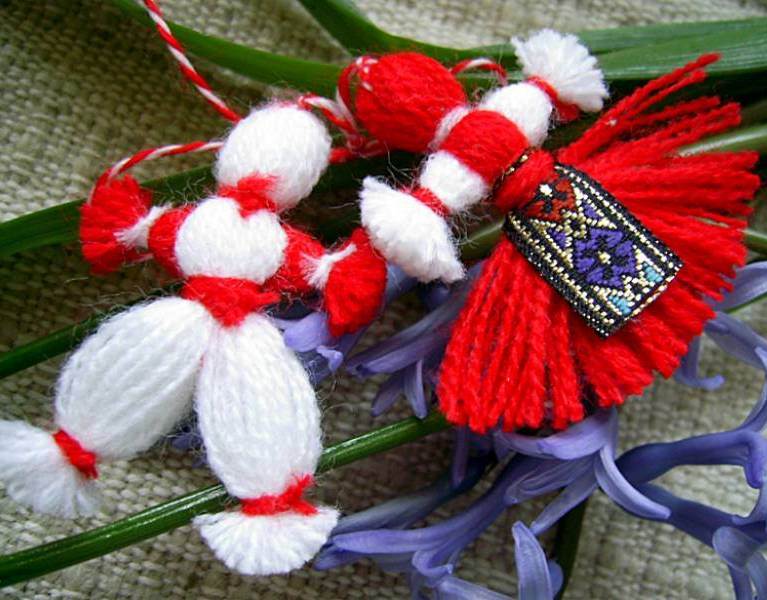On the 1st of March Bulgarians celebrate one of their most beloved traditional holidays – Baba Marta (Grandma Marta Day), which is believed to mark the beginning of spring. There is a great amount of folklore about this day and the character of Granny Marta herself. Baba Marta is believed to be a feisty lady who always seems to be grudging at her two brothers, January and February, while the sun only comes out when she smiles. In folklore there are different versions of the Baba Marta tale. One says that on that day she does her pre-spring cleaning and shakes her mattress for the last time before the next winter – all the feathers that come out of it pour on Earth like snow – the last snow of the year. Every toddler knows that Baba Marta is a charming old lady who chases away the cold and grumpy February. She invites the sun, the flowers, and the birds for a new season of bustling life. Being a purely pagan ritual by origin, Baba Marta Day is one of the oldest continuing traditions in Christian Europe.
During the weeks preceding March, the streets are packed with hundreds of stalls selling all kind of martenitsa. Martenitsa is a yarn thread in white and red that Bulgarians give to their friends and family on 1st of March. Some even tie it on their pets or decorate their homes with various kinds of martenitsa. A typical martenitsa consists of two woolen dolls tied up together – Pizho (male) and Penda (female). Pizho is all made of white wool, while Penda is all in red. A martenitsa is usually tied around the wrist or pinned as a brooch on the jacket. Martenitsa is always given as a gift and a person should never buy it for themselves. Bulgarians believe that the ritual will provide them a year full of happiness and good fortune. Sometimes they make a wish while the martenitsa is being tied around their hand. The greeting exchanged on 1st of March is Chestita Baba Marta (Happy Grandma Marta).
The white color of the Martenitsa initially symbolized the human nature, the strength and the light solar zone. Later influenced by Christian mythology, it became the symbol of virginity and virtuousness – the white color is the color of Christ. The red color in the Martenitsa was chosen to represent health and the woman’s nature – it is a sign of blood, conception and birth. The women’s wedding dresses and traditional costumes used to be red once upon a time. Traditionally, the Martenitsa has always been a unique amulet that was believed to provide protection from the powers of evil.
Once the owners of the Martenitsa have seen the first stork – the symbol of the spring, they must take their Martenitsa off and hang it on a blooming tree. The different areas of Bulgaria offer a different vision of that tradition – according to another one people should leave their Martenitsas under large stones only to return nine days later and see what they would find underneath it – if they found ants that meant the year would be rich of sheep, if they found larger bugs, then they would h
ave more cows that year. Other people have the tradition of throwing their Martenitsas into the river, so that their lives run smoothly and they escape from all hardships of life.
The martenitsa now comes in all shapes and sizes – from giant Pizho and Penda to two tiny twisted strings gently placed on the arm. However, it always bears the same meaning – a lucky charm against the evil spirits of the world, a token for health and a sign of appreciation.





